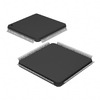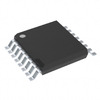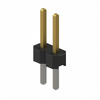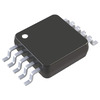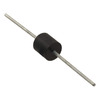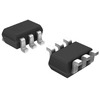LM741 vs. LM358: Understanding the Differences for Optimal Selection
Operational amplifiers (op-amps) are the ultimate building block in many electronic circuits, and the LM741 and LM358 are two widely used examples. Despite both being general-purpose devices, they exhibit distinct performance characteristics due to differences in their design architectures. The LM741 is known for its traditional design, offering high gain and stable performance, though it relies on a dual power supply, which can limit its flexibility. Meanwhile, the LM358, with its ability to operate on a single power supply, is more versatile in modern low-power and portable applications. This article digs into the key differences between these two op-amps, exploring how their specifications and practical applications set them apart.Catalog
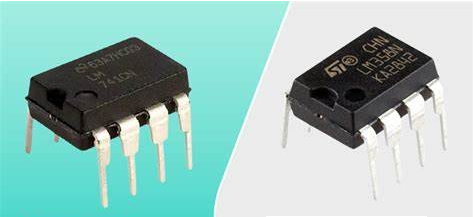
LM741 vs. LM358 Pin Configuration
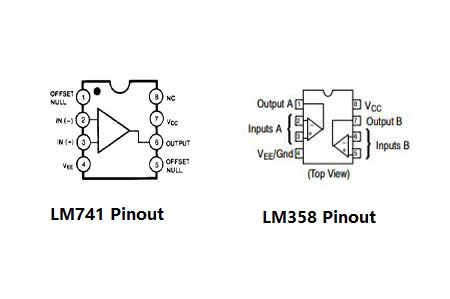
LM741 vs. LM358 Overview
One noticeable difference between the LM741 and LM358 is their power supply requirements. The LM741 necessitates a bipolar power supply, meaning it requires both a positive and a negative voltage source. This configuration isn't suitable for single-supply operations, potentially complicating the design and increasing costs for systems seeking simplicity. On the other hand, the LM358 excels with a single 30V power supply, an option that enhances its appeal. This allows the input voltage to drop to 0V, extending to the negative supply pin, and introducing more design flexibility. The maximum input, however, must be at least 1.5V below the positive supply pin. In practical scenarios, the LM358's ability to operate with a single supply streamlines circuit design and reduces the need for additional power conversion components.
The distinct internal architectures of the LM741 and LM358 also result in different input bias currents. A 100nA current through a 10kΩ resistor might seem negligible, yet it generates a 1mV error voltage, potentially serious depending on the application. This could be of remarkable concern in precision measurements or high-accuracy circuits, where even minor errors might cause notable deviations from normative performance standards. The LM358's lower input bias current mitigates this issue, offering more stable operation in precision applications. For instance, in battery-operated devices, where energy efficiency and minimal error margins are insistent, the LM358’s low bias current significantly contributes to overall efficacy.
Analyzing these distinctions allows you to make informed choices, selecting components that best meet their performance criteria within given constraints. Choosing between the LM741 and LM358 often axes on the specific requirements of the application. For designs necessitating dual power supplies, where power consumption is less serious, the LM741 might be suitable due to its robustness and well-established performance history. However, in low-power or single-supply designs, the LM358 is advantageous. This is mostly evident in portable medical devices or remote sensing equipment, where long battery life can be used. By leveraging the unique properties of each operational amplifier, you can tailor their designs to optimize performance, efficiency, and cost-effectiveness.
LM741 vs. LM358 Key Specifications
|
Specification |
LM741 |
LM358 |
|
Supply Voltage (max.) |
±22V |
32V (±16V) |
|
Input Bias Current (max.) |
~200nA |
100nA |
|
Input Voltage Range (max.) |
±13V (±15V supply) |
0V – (V+ - 1.5V) (30V supply) |
Comparing the Internal Circuitry
LM741 Internal Circuit
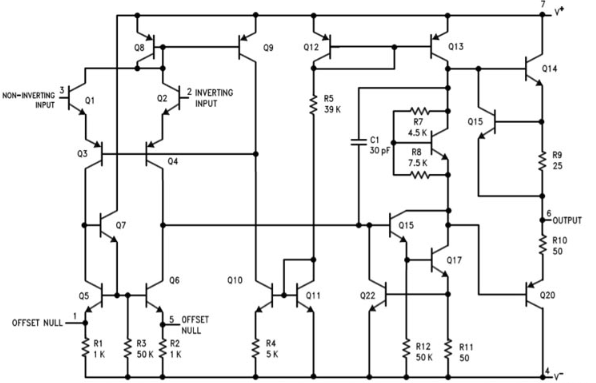
The LM741 integrates a complex internal design, featuring a pair of NPN transistors that buffer a PNP transconductance gain stage. In addition, a current mirror distributes current symmetrically across the differential amplifier, while a dedicated current source powers the input stage, boosting stability and performance.
Incorporating elements such as current mirrors and PNP amplifiers set operational constraints for the LM741. The input voltage must be at least 2V above the negative supply rail due to voltage drops from these components. For single-supply operations, input voltages above 1.5V are used. The NPN transistor buffer arrangement increases bias current, which affects the amplifier’s efficiency.
LM358 Internal Circuit

The LM358 adopts a unique approach with a "twice" buffered stage, which effectively minimizes bias currents. In the input stage, PNP transistors maintain their emitter voltages at approximately 0.6V, even when the input voltage is at zero, ensuring low-voltage operation. This configuration utilizes extra PNP buffer transistors for a consistent diode drop and shields the input current mirror from potential low-voltage disruptions.
LM741 vs. LM358 The Differences
|
Feature |
LM741 |
LM358 |
|
Dual supply operation |
Yes |
Yes |
|
Single supply operation |
No |
Yes |
|
Input common-mode range |
Does not include either supply rail, must be at least 2V
above and below |
Includes negative supply rail, goes up to 1.5V below
positive supply rail |
|
Bias current |
Relatively higher |
Relatively lower |
|
Recommended for new designs |
No, older part |
Yes, general-purpose, easily available and cheap |
|
Amplifier package |
Single amplifier in a package |
Dual amplifiers in a single package, quad available |
Conclusion
Choosing between the LM741 and LM358 op-amps ultimately depends on the specific requirements of your project. While the LM741’s robust design and high slew rate make it ideal for high-speed and precision applications, the LM358’s energy efficiency and single-supply operation offer greater flexibility for low-power, portable, and embedded systems. Understanding their distinct strengths helps you optimize performance, efficiency, and cost in various electronic circuits. Whether you need high-frequency precision or low-power versatility, both op-amps provide reliable solutions in different scenarios.
Frequently Asked Questions [FAQ]
1. What is LM741 used for?
The LM741 functions as a comparator, evaluating input voltage levels to determine whether they are higher or lower. This operational amplifier IC features 8 distinct pins. In contexts requiring precise threshold detection, such as analog computing and instrumentation, it delivers reliable performance due to its built-in frequency compensation and robustness to feedback configurations. Its effectiveness in differential amplification setups has rendered the LM741 a staple in various engineering applications. Its widespread use emphasizes its dynamic role in ensuring accurate voltage comparisons and robust signal processing.
2. Is LM358 an op-amp?
The LM358 is indeed a low-power dual operational amplifier, featuring two high-gain and frequency-compensated op-amps. It excels in signal buffering and amplification within circuits like voltage comparators, active filters, and voltage-controlled oscillators (VCOs). Its low power consumption and ability to operate over a wide range of voltages make it exceptionally efficient in signal conditioning circuits. This dual op-amp is mostly beneficial in battery-powered systems and portable devices. In audio signal processing, the LM358 is noted for significantly enhancing signal clarity and integrity.
3. What is the recommended maximum supply voltage for LM741?
For the LM741/LM741A at VS = ±15 V, the operational temperature range is −55°C to +125°C. For the LM741C/LM741E, the specifications apply within 0°C to +70°C. These temperature ranges enable the LM741 to function reliably across various environmental conditions, making it adaptable to both industrial and commercial applications. Maintaining an optimal supply voltage is used for the stability and longevity of the op-amp’s performance, supported by extensive field usage. Effective thermal management practices can further extend the operational lifespan of these devices.
About us
ALLELCO LIMITED
Read more
Quick inquiry
Please send an inquiry, we will respond immediately.
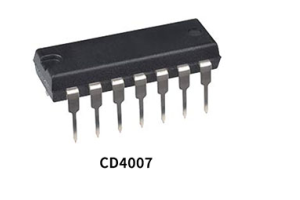
CD4007 CMOS Inverter: Pinout, Datasheet, and 14-SOIC Package Overview
on October 21th
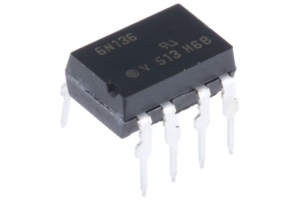
Comprehensive Guide to the 6N136 Transistor: Pinout, Circuit, and Datasheet
on October 21th
Popular Posts
-

What is GND in the circuit?
on January 1th 2915
-

RJ-45 Connector Guide: RJ-45 Connector Color Codes, Wiring Schemes, R-J45 Applications, RJ-45 Datasheets
on January 1th 2478
-

Fiber Connector Types: SC Vs LC And LC Vs MTP
on January 1th 2071
-

Understanding Power Supply Voltages in Electronics VCC, VDD, VEE, VSS, and GND
on November 8th 1862
-

Comparison Between DB9 and RS232
on January 1th 1755
-

What Is An LR44 Battery?
Electricity, that ubiquitous force, quietly permeates every aspect of our daily lives, from trivial gadgets to life-threatening medical equipment, it plays a silent role. However, truly grasping this energy, especially how to store and efficiently output it, is no easy task. It is against this background that this article will focus on a type of coin cell battery that may seem insignificant on the...on January 1th 1705
-

Understanding the Fundamentals:Inductance Resistance, andCapacitance
In the intricate dance of electrical engineering, a trio of fundamental elements takes center stage: inductance, resistance, and capacitance. Each bears unique traits that dictate the dynamic rhythms of electronic circuits. Here, we embark on a journey to decipher the complexities of these components, to uncover their distinct roles and practical uses within the vast electrical orchestra. Inductan...on January 1th 1647
-

CR2430 Battery Comprehensive Guide: Specifications, Applications and Comparison to CR2032 Batteries
What is CR2430 battery ?Benefits of CR2430 BatteriesNormCR2430 Battery ApplicationsCR2430 EquivalentCR2430 VS CR2032Battery CR2430 SizeWhat to look for when buying the CR2430 and equivalentsData Sheet PDFFrequently Asked Questions Batteries are the heart of small electronic devices. Among the many types available, coin cells play a crucial role, commonly found in calculators, remote controls, and ...on January 1th 1534
-

What Is RF and Why Do We Use It?
Radio Frequency (RF) technology is a key part of modern wireless communication, enabling data transmission over long distances without physical connections. This article delves into the basics of RF, explaining how electromagnetic radiation (EMR) makes RF communication possible. We will explore the principles of EMR, the creation and control of RF signals, and their wide-ranging uses. The article ...on January 1th 1523
-

CR2450 vs CR2032: Can The Battery Be Used Instead?
Lithium manganese batteries do have some similarities with other lithium batteries. High energy density and long service life are the characteristics they have in common. This kind of battery has won the trust and favor of many consumers because of its unique safety. Expensive tech gadgets? Small appliances in our homes? Look around and you'll see them everywhere. Among these many lithium-manganes...on January 1th 1497



